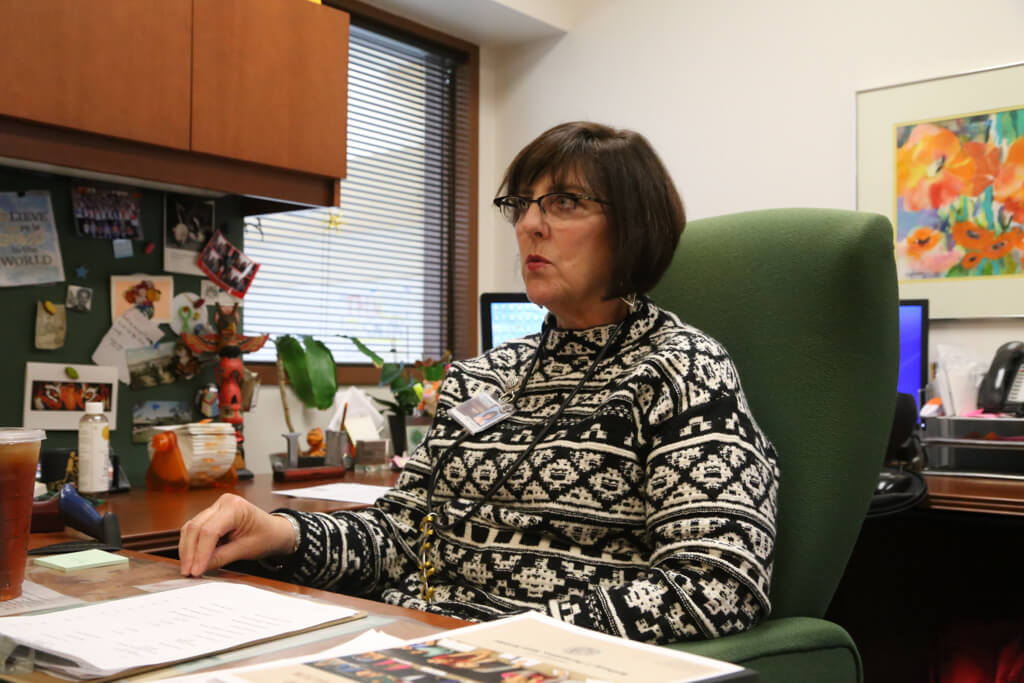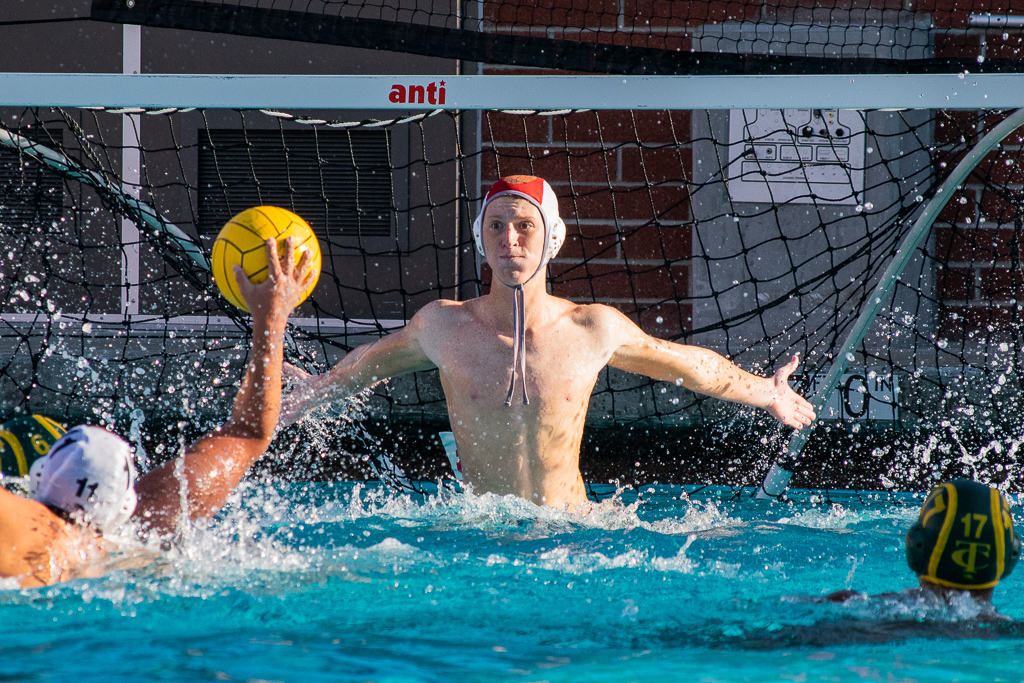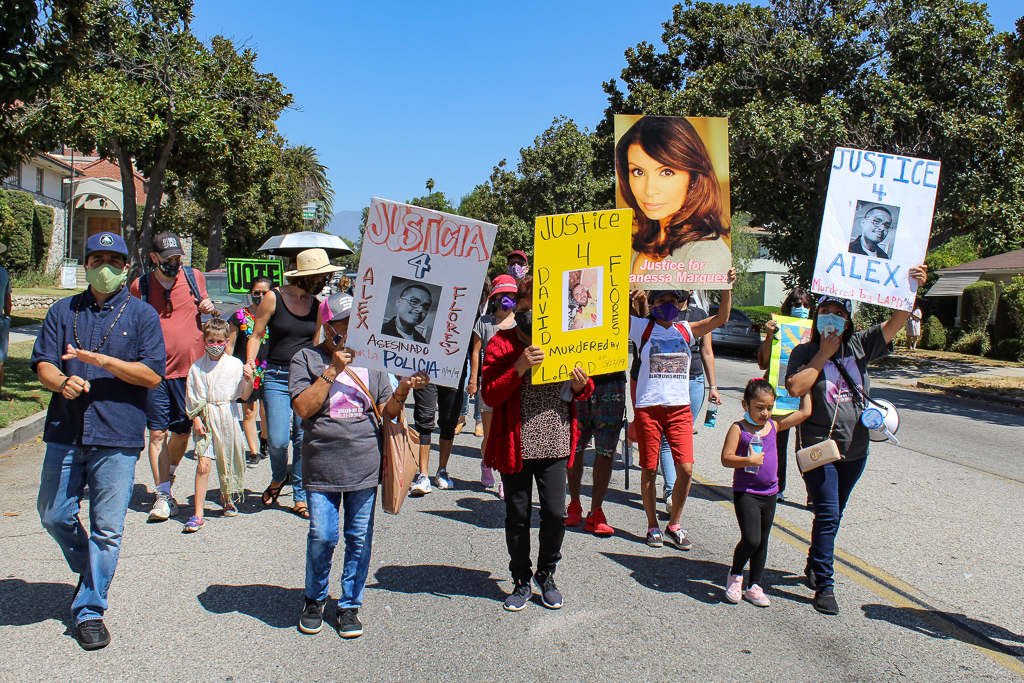Story by Zoe Schlaak
Staff Writer
Photo by Thomas Forman
Contributor
Social distancing has transformed schools across the nation. As SPUSD heads into its third full week of instruction, Tiger interviewed the SPHS administration — Principal Janet Anderson, Assistant Principal David Speck, and Assistant Principal/Curriculum Advisor Janet Wichman — to discuss the new reality of distance learning.
This interview has been edited for length and clarity.
Tiger: What do your daily work lives consist of now?
David Speck: There are lots of Zoom calls, lots of Zoom meetings, and emails correspondence with parents, teachers, and students.
Janet Wichman: The days are much longer now that it is distance learning, because you are always working and always trying to answer emails all times of the day, not just school hours.
Janet Anderson: I don’t think I have had a day off since March because when you’re home, the office is a few feet from every other room in the house. It’s too easy to get sucked in there and think, “Oh, I’ll just take care of a few things.” But then there is so much that needs to be addressed that it’s almost like we are slaves to the computer.
Tiger: How do you think distance learning is going for teachers and students based on what you’ve heard?
Anderson: At textbook distribution, quite a few students said they really are liking it. And then I heard parents say they really recognized a difference from last spring. They could tell that a lot of work was done to change the dynamic for students. Just last night, I heard that some students think maybe there should be more breaks during the day. But I wonder if just as many students would like to move along at a brisk speed so they can be finished sooner.
Tiger: Have teachers and students faced any distance learning hiccups while adjusting?
Anderson: Yes and in our staff email folder, where people write back and forth, it’s interesting to see problems from big to small. There is such a sense of collaboration. Someone will put out a question about something and six other people will say, “This is what you might want to try,” and put up a screenshot with instructions on how to do something. There are things that need to be addressed and teachers are identifying them as they come up. Other people jump right in to try and help and I think that has been a really healthy and growth-minded way of approaching things. We have some people that are more experienced with technology and some who aren’t, but I think most of them are taking a giant leap in their abilities with technology.
Speck: I think that this is opening up a whole new world in education beyond distance learning and once we get back into a sense of normal — whatever that’s going to look like in the future — imagine the type of technical skills that students, parents, teachers, and that everyone’s going to have. The ability to do meetings like we do right now on the fly is opening up a whole new world for us, so that is a positive that’s coming from it. The connectivity issues that we’ve had haven’t been as much as it could have been. I feel like a lot of that stuff is leveling out and kids are getting into a routine and they know how to contact a teacher if they are having trouble getting into a meeting. I think it has gone pretty well and it’s getting even better.
Tiger: What responsibilities have the tech department taken on since distance learning?
Anderson: They spent a good amount of the summer dealing with Chromebooks. Collecting them from last year, cleaning them, getting the new ones, getting them ready to distribute, and distributing them, but beyond that, Mr. Chad Bryant, who is our digital citizenship director, is very well versed in technology. He and Mrs. Engelhard have done a lot of the training and also Mrs. Kadri and some other teachers as well…. They had a three-week session for workshops and a lot of our teachers attended that. After that, our tech folks put together a series of workshops to meet the needs of teachers. Some of those were presented by our own teachers and I would say that most of our teachers found those to be the most valuable courses. So they were really working overtime trying to deal with bugs in the system as recently as this week. [We’re] trying to make Zoom more secure and teaching all sorts of different things. On [Friday,] Sept. 4, we have a professional development day and we are going to do more workshops and it will involve our tech-savvy teachers and our tech admin and directors.
Tiger: How does the admin plan to keep addressing mental wellness during distance learning?
Anderson: I think we have several initiatives that were going on before this that will be helpful. That would be our Peer Mediators that are now working with the newly-formed Creations group. Our Challenge Success program has been dealing with trying to help students feel more balanced. Our Anti-Bias Club peripherally works with this and they have a secondary mission to enhance mental health. We really see that this is a rough time for everyone from children to adults, but this so shakes up the experience of our young people and we know we need to make sure there are resources for them. Mrs. Prime, our social worker, will be having special hours when people can contact her. Our district has just connected with a company Care Solace that is going to be providing 24/7 outreach for people who are suffering from emotional and mental health issues. So we are really trying to surround our students with resources and opportunities through clubs. Mr. Shotwell and the commissioners have done a great job coming up with things they can offer students for them to remain involved. I think getting out of yourself and getting into something else are, for a lot of people, really good steps toward enhancing mental health.
Tiger: The Teachers Association of South Pasadena (TASP) proposed mental wellness Fridays, but the School Board declined it. Do you guys believe the current schedule is enough to conduct school activities, assemblies, etc?
Anderson: I think it kind of remains to be seen. That model was something we did talk about early on before TASP presented it. We talked about whether people would want a wellness Wednesday break in the middle of the week because some other districts were doing similar things. We ended up with the schedule we have so I’m hopeful that with the combination of showing some assemblies and having some activities within the class time and then using that afternoon time for others, I’m really hoping that we can get a lot of students involved. But that’s a big question. I was just talking to two ladies from the Booster Club and we were saying, “Gosh, we really want to hear from the students about how we get them to take that next step and remain involved.” So really I kind of throw that out to you and your readers to let us know what is the best way to really get involved. Currently, we do not have a fitness Friday or wellness Wednesday. But we have that block at the end of each day so if we can better understand how to engage students in that, I think that would be really helpful.
Wichman: Also all of our ninth-grade students have a study hall class so we are planning on doing different activities for them during their study hall periods. So we will get some stuff done that way as well.
Tiger: The main concern that TASP had was whether the teachers would have enough time to pivot into an online format. Do you think that transition has been going well and why?
Anderson: I think they have done a great job and I think the majority of the teachers did a lot of the staff development that we offered over the summer and I call it the “Summer That Wasn’t” because you know it was just like every other day. But I think they really threw themselves into learning ways to best meet the needs of their students and for that I am very proud of them. That sounds condescending. I don’t mean it that way, I am really proud of our staff for stepping up and trying to do that. It was early July or late June where we first started having discussions about what the schedule for the year would look like. So it just took a long time to come to the final decision on that. And I know some teachers felt like they could have prepared better if they had known sooner, but that was not really anyone’s fault. It was just that it went back and forth longer then. It seemed like something that could have been settled sooner but it just didn’t happen to get settled very quickly.



